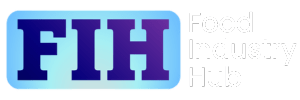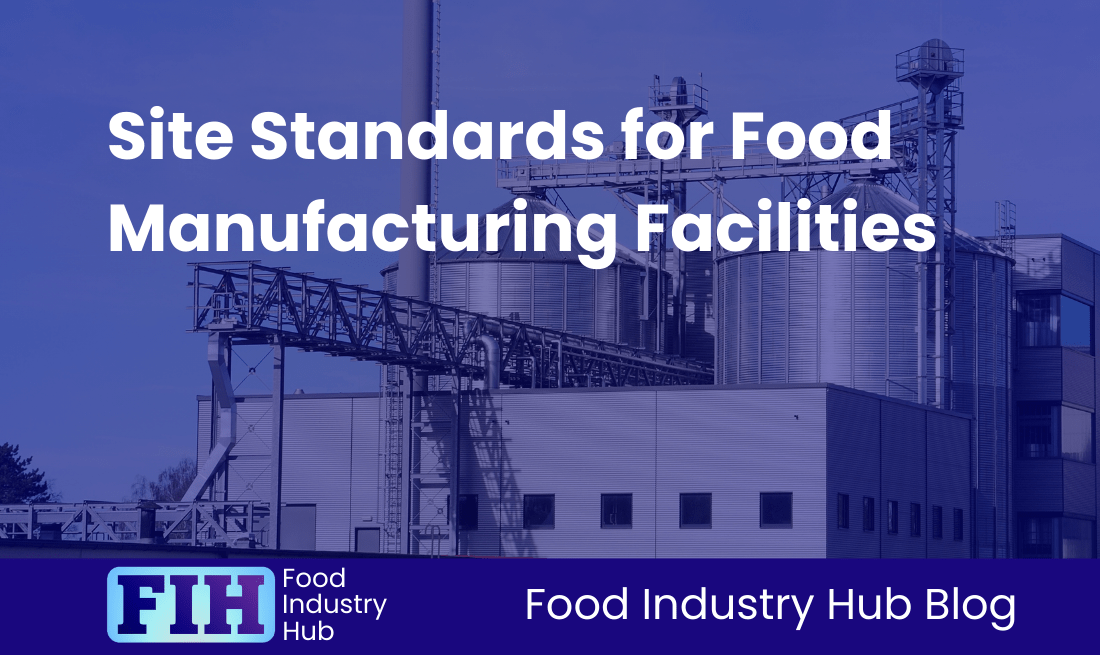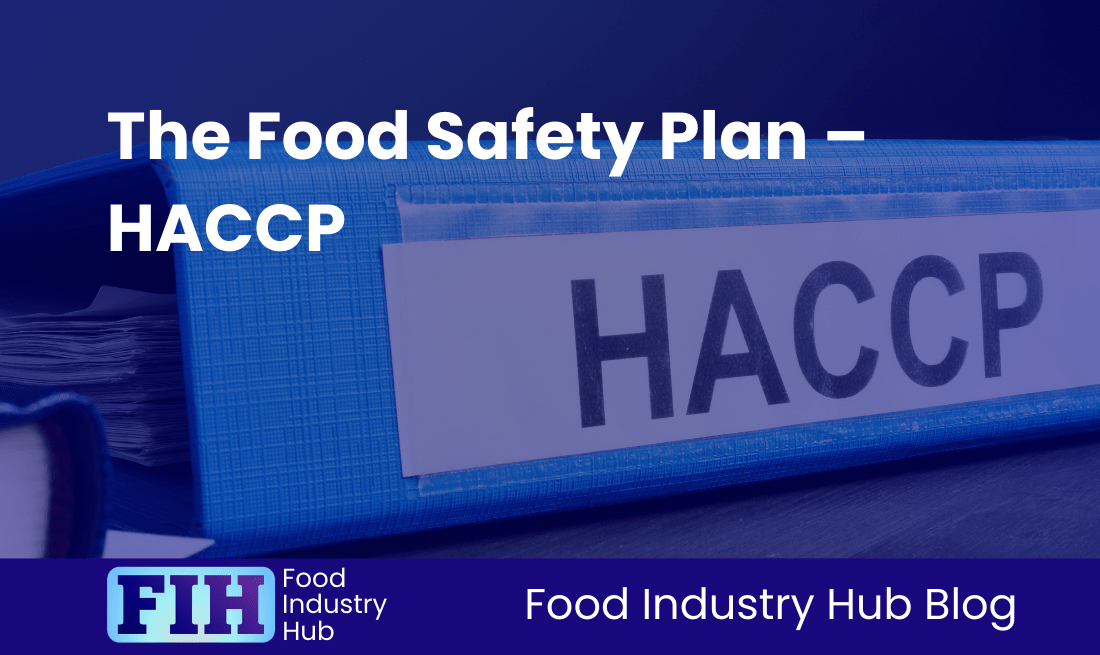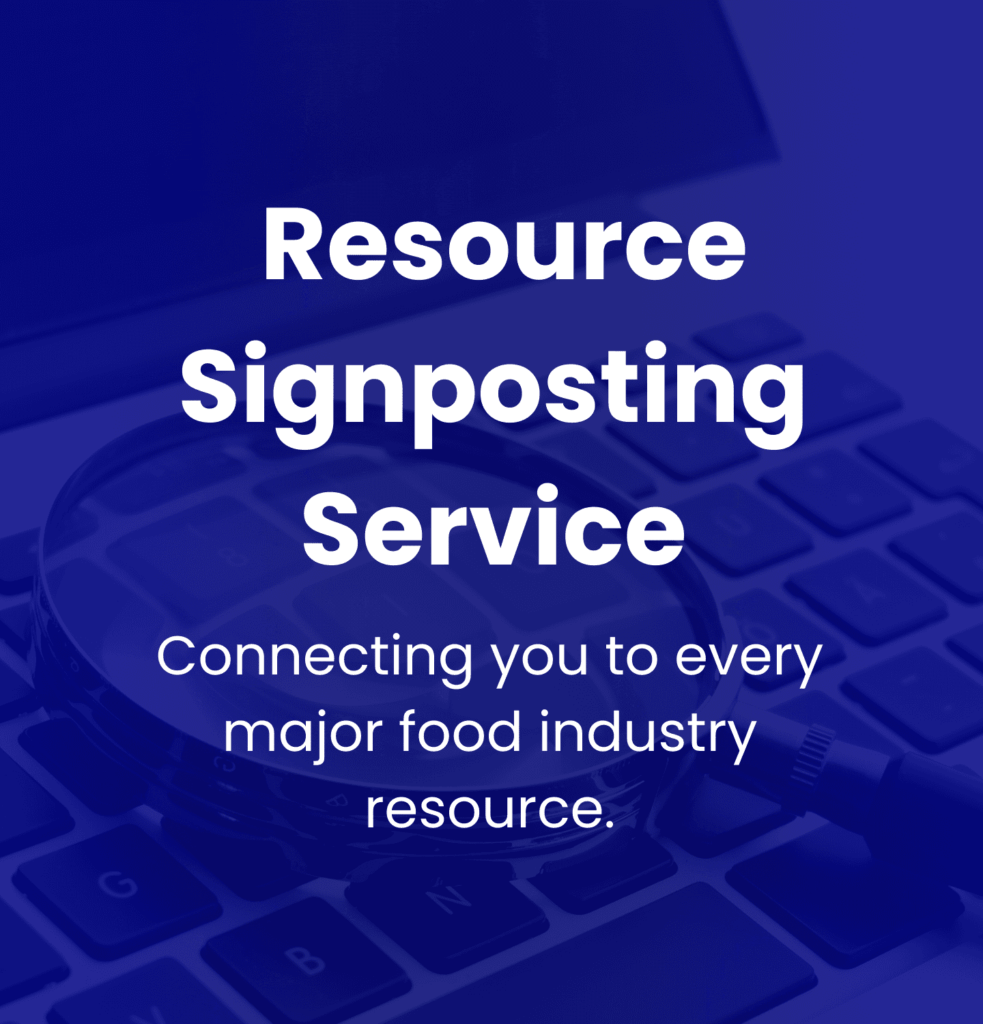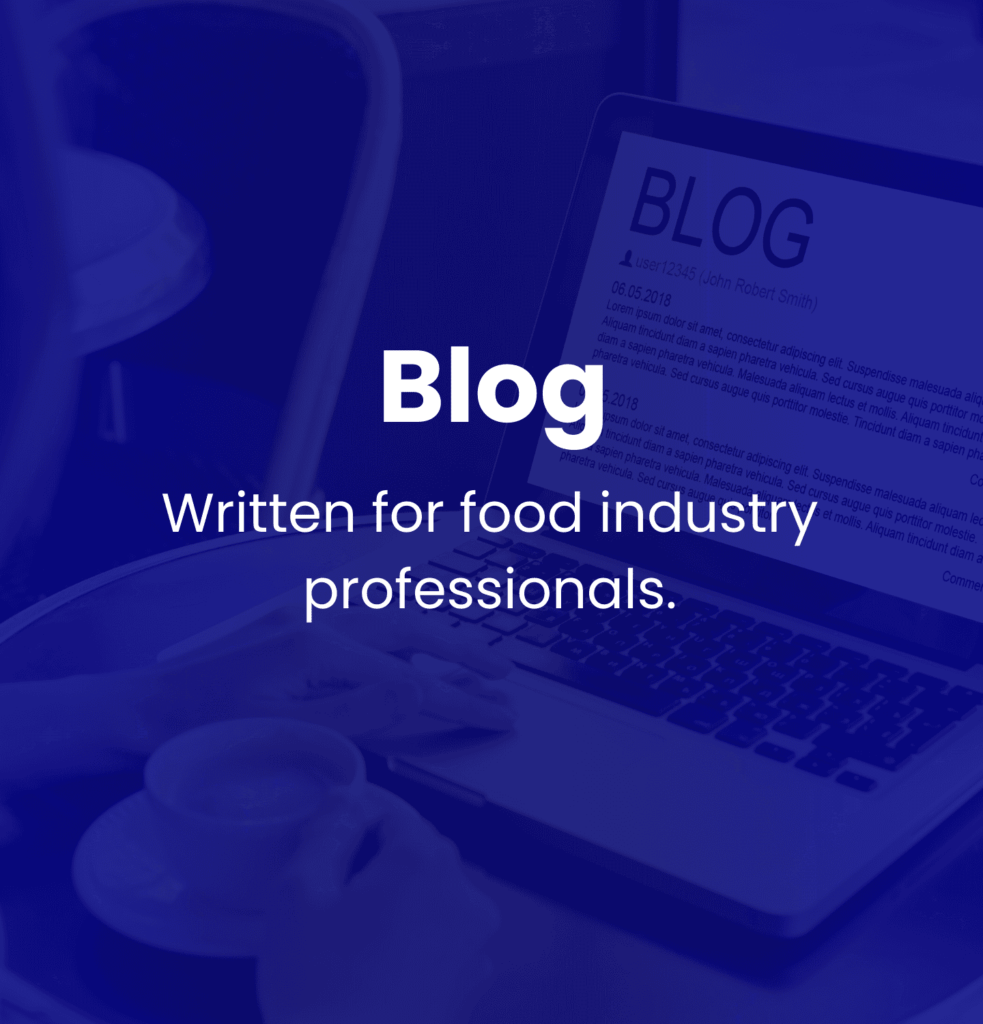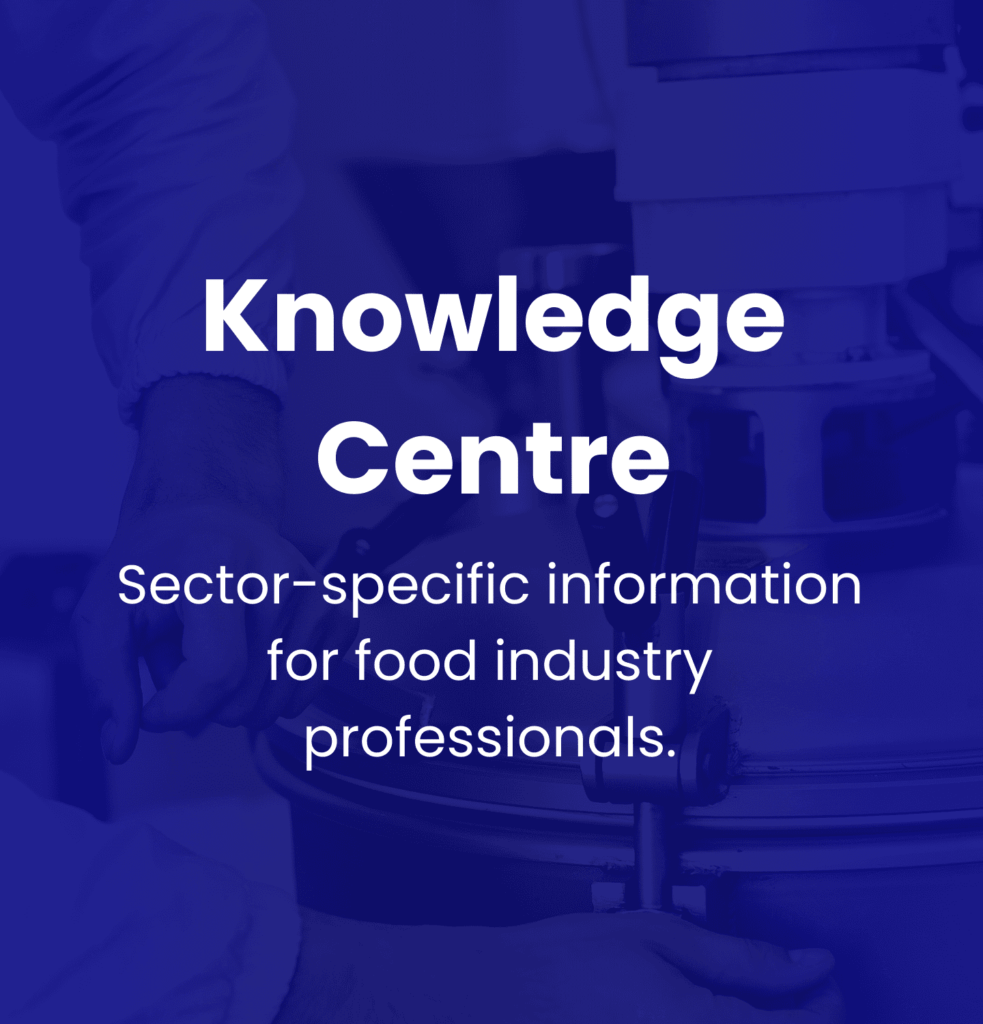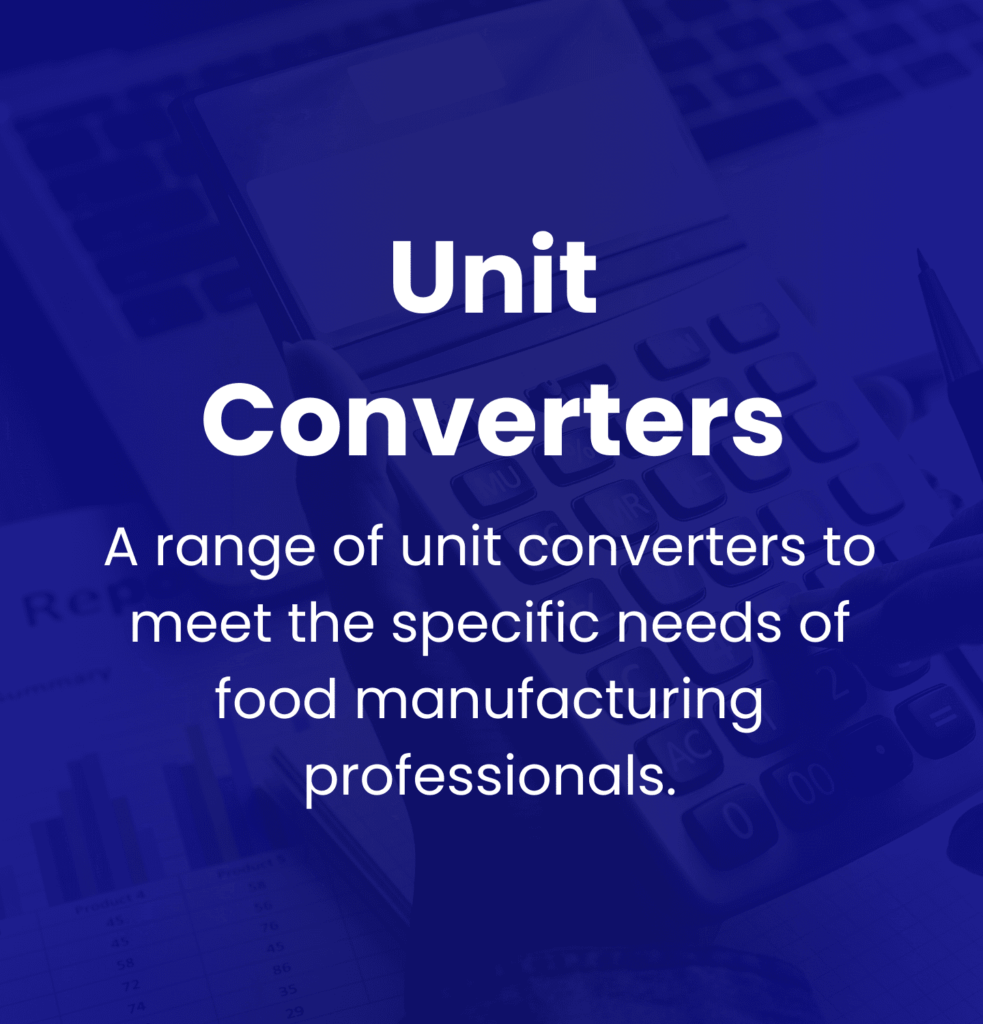Know: Equipment Commissioning
Contents
Introduction
Key Takeaways
Regulatory and Compliance Frameworks
Commissioning Process Overview
Mechanical and Electrical Commissioning
Validation and Quality Assurance
Health, Safety, and Environmental Considerations in Equipment Commissioning
Training and Competency Development during Commissioning
Documentation and Record-Keeping in the Commissioning Process
Roles and Responsibilities in Equipment Commissioning
Global and Regional Regulatory Variations in Commissioning
Best Practices and Efficiency Optimisation in Commissioning
Innovations in Equipment Commissioning
Conclusion
Introduction
In the food manufacturing industry, equipment commissioning takes centre stage, significantly affecting facets such as food safety, assured quality, operational efficiency, and legal adherence. This process forms the bedrock for unvarying product quality, guaranteeing that all equipment operates as designed while upholding regulatory standards.
In relation to food manufacturing, equipment commissioning denotes the methodical procedure of installing, testing, and ensuring that equipment functions properly, complying with specified operational boundaries. Included within this process is an array of activities ranging from preliminary tasks like cleaning and pressure testing, to factory acceptance evaluations aimed at confirming performance against fixed specifications.
Equipment commissioning’s significance transcends the basics of installation— it has deep-seated connections to food safety and quality assurance. Commissioning processes enhance operational efficiency by ensuring proper equipment function, thereby reducing contamination risks and contributing to a consistent quality in product. Smooth commencement of production, sustained optimal productivity, and adherence to various regulatory frameworks—as it pertains to hygiene standards and environmental repercussions—are all facilitated by proper commissioning.
Key Aspects of Equipment Commissioning
Notable themes closely tied to equipment commissioning include Regulatory and Compliance Frameworks, which elucidate the mandatory legal requirements and guidelines to be followed, such as conformity to international food safety standards and local health regulations. Commissioning Process Phases form another important theme, offering detailed insight into the progression from pre-commissioning to performance evaluations. Finally, Validation and Quality Assurance procedures hold an important place in assuring that both equipment and processes conform to established standards, backed by detailed documentation of commissioning milestones.
An understanding and appreciation of these themes can equip food manufacturing professionals with a deeper perception of the comprehensive nature of equipment commissioning and its remarkable influence on the integral integrity and effectiveness of the industry.
Key Takeaways
Regulatory and compliance frameworks have a significant role in the commissioning of equipment within the food manufacturing industry. Adherence to regulations from authorities such as the FDA is essential to ensure that equipment meets the necessary safety and quality standards for effective production. Documents such as User Requirement Specifications (URS) and design qualification reports are core to aligning equipment capabilities with regulatory requirements, thus serving product integrity and consumer safety.
Commissioning Process
The commissioning process involves several significant stages that need careful attention. It initially involves in-depth design and planning where user requirements are defined, and design qualifications are confirmed to establish compliance from the beginning. Operational checks are conducted during cold and hot commissioning phases to verify that the equipment operates efficiently both before and during actual use. Each stage of this process should involve comprehensive documentation to ensure high standards of compliance, aiding regulatory audits and enabling proper training among staff.
Validation and Quality Assurance
Validation and quality assurance routines are essential in ensuring the functionality and safety of equipment. With systematic validation—comprising Installation Qualification (IQ), Operational Qualification (OQ), and Performance Qualification (PQ)—manufacturers can confirm that their systems operate correctly under the intended conditions. This certainty is critical in ensuring safety and consistency in product output. Risk assessment and robust documentation further enhance efforts to maintain operational excellence and compliance with safety standards.
Effective commissioning is a process that demands regulatory compliance, detailed attention to significant stages of implementation, and integration of validation and quality assurance practices. All these elements aim at facilitating safe and high-quality food production.
Food Industry Hub Management Systems can significantly boost the effectiveness of your food safety and quality management system, leading to improved confidence and elevated quality assurance throughout your operations.
Regulatory and Compliance Frameworks
The Importance of BRCGS Global Standards and UK-Specific Standards in Equipment Commissioning
The BRCGS Global Standard for Food Safety provides a sturdy regulatory framework for the food manufacturing industry. A significant aspect of its influence lies within the activity of equipment commissioning. Now in its ninth edition, the BRCGS outlines specific requirements that demand a structured commissioning process for new equipment. A key focus is to guarantee that all new equipment satisfies essential measures of food safety and quality. This involves meticulous validation protocols, such as User Requirement Specification (URS), Design Qualification (DQ), Installation Qualification (IQ), Operational Qualification (OQ), and Performance Qualification (PQ) as applicable. With recognition across more than 130 countries, the BRCGS emphasises operational controls that can capably mitigate contamination risks across the supply chain, thereby enhancing product safety.
Bolstering the BRCGS are UK-specific standards from regulatory bodies such as the Food Standards Agency (FSA) and the Department for Environment, Food, and Rural Affairs (DEFRA). These bodies set forth guidelines, which align well with the requirements specified by BRCGS, to ensure sound oversight of food manufacturing practices. A case in point is the set of standards relating to primary animal conversion. These stress on the necessity of commissioning processes integrated with risk assessments, thus preventing any risk of contamination owing to equipment design and maintenance while ascertaining compliance with local and national regulations.
An Insight into Core Regulatory Requirements
The EU’s EC 852/2004 standard establishes essential hygiene standards across the food supply chain. Key points include the need for well-maintained cleanliness and the prevention of contamination through correct design and operation of equipment. Although it may not directly detail commissioning processes, it does emphasise the importance of maintenance and operational protocols that are aligned to the requirements of the BRCGS scheme and UK regulations.
The Current Good Manufacturing Practices (cGMP) endorsed by the US FDA puts in place similar guidelines to facilitate a controlled environment for food manufacturing. Directives involve equipment design, installation, and maintenance, compelling manufacturers to pay due attention to equipment functionality, thereby facilitating food safety and curbing contamination risks.
Obstacles in Global Consolidation of Commissioning Regulations
The task of creating a unified global standard for commissioning equipment encounters a number of challenges. Notably, the diversity of the regulatory environment poses complexities due to variations from region to region. Differing standards have made unification a difficult process for international companies aiming to standardise their commissioning workflows. Complications arising from cultural divergences and distinct technical requirements have added to the hurdles in harmonising commissioning procedures on a global scale. Such deviations call for constant adaptations of regulatory frameworks, resulting in a resource-heavy process for organisations striving for balance between compliance and operational efficiency.
Understanding Key Terminologies and Their Role
The commissioning process entails a set of key terminologies that each play a unique role in the achievement of food safety and operational goals.
Explanation of Key Terms:
- User Requirement Specification (URS): An elementary document outlining functional and performance requirements for new equipment. Guiding the entire commissioning process, the URS ensures alignment of equipment design with operational objectives and compliance with requisite safety standards. A well-formed URS can minimise the possibility of expensive redesigns or operation halts due to equipment inadequacies.
- Installation Qualification (IQ): This step involves a thorough assessment, ensuring the equipment’s installation aligns with the manufacturer’s specifications and the URS. The procedure includes checks on utility connections and make certain that the installation site complies with operational requirements. This is a key phase that lays the groundwork for future qualifications and reduces risks associated with equipment that can affect product safety.
- Operational Qualification (OQ): As a key stage in commissioning, OQ tests the equipment’s performance under expected operating conditions and validates its ability to meet predefined specifications. The importance of OQ testing arises from its role in ensuring that the equipment functions as intended during routine production runs, both integrating food safety and quality assurance goals.
- Performance Qualification (PQ): Concluding the validation phase, PQ tests if the equipment can consistently produce products that conform to quality standards under actual production scenarios. This verifies the equipment’s reliability and its ability to help uphold food safety requirements.
Successful implementation of these terminologies—URS, IQ, OQ, and PQ—allows food manufacturing companies to enhance their operational effectiveness and maintain high safety standards throughout the equipment commissioning process.
Commissioning Process Overview
Commissioning, as an essential process within food manufacturing, serves as the documented approach to affirm that facilities or components function in compliance with designated designs. This systematic method not only nurtures safety and efficiency but also promotes regulatory adherence.
A Detailed Guide to the Commissioning Process
- Planning Stage: This initial stage begins with devising a detailed commissioning plan that highlights the scope, objectives and methods for commissioning activities. Key duties encompass identifying the systems or equipment that need to be commissioned, pinpointing the roles and responsibilities of the commissioning team, scheduling tasks, and setting the performance acceptance conditions.
- Installation Phase: Here, equipment or systems are installed as per the specified design instructions and quality norms. Inspections ensure synchronisation with the original design documents, thereby laying the foundation for efficient testing.
- Testing Phase: This phase dedicates itself to running tests to confirm the correct operation of the systems. Ranging from simple functional checks to elaborate performance evaluations, tests help uncover deficiencies that must be rectified. Subsequent re-testing confirms that such issues are resolved effectively.
- Documentation Phase: This stage underscores the importance of maintaining meticulous records of commissioning activities, inclusive of test results and the implementation methods. By recording results and offering recommendations for repairs or enhancements, commissioning reports ensure audit readiness and industry standard conformity.
- Training and Operational Phase: Thorough training of facility operators and maintenance personnel, equipping them to capably manage the equipment, is carried out in this phase. Moreover, this stage is complemented by establishing permanent monitoring and maintenance plans embodying best practices for maintaining optimal operation.
- Performance Verification Phase: The final phase seeks perfection, fine-tuning system operations through discussions with Subject Matter Experts (SMEs) and project participants. To gauge the system performance against pre-determined requirements, evaluation periods are established. On successful completion, the system receives Provisional and Final Acceptance Certificates, signifying its adherence to the performance conditions.
Understanding and Advantages
Commissioning seeks to ensure that installations and systems function as per their design specifications, thereby reducing errors and downtime while amplifying return on investments. By fostering collaboration among project managers, engineers, quality control teams and occasionally third-party specialists, the process supports comprehensive execution. Notably, by identifying and addressing potential concerns at an early stage, commissioning secures enduring performance, safety and compliance in food manufacturing activities. Ultimately, this contributes to maintaining consistent product quality and upholding food safety regulations.
Sign-up for the Food Industry Hub Mail Service
We regularly produce new content for food industry professionals, and the Food Industry Hub Mail Service is the best way to stay up to date with the latest additions.
Signup today to be added to the Food Industry Hub mailing list.
Mechanical and Electrical Commissioning
Implementing mechanical and electrical commissioning is a fundamental practice that assures the correct and safe operations of systems. This is particularly significant within the food manufacturing sector where unwavering adherence to safety and quality parameters is important.
Mechanical Commissioning: Dry and Wet
Mechanical commissioning is implemented in two stages: dry commissioning and wet commissioning.
- Dry Commissioning: At this stage, mechanical systems are tested without introducing any process fluids. In essence, this includes carrying out various activities such as interlock tests, emergency shutdown tests, control system sequence verification, and integrity checks on mechanical components. Undertaking these steps confirms that systems are capable of operating as intended before the introduction of operational fluids, thus mitigating risks associated with potential leaks or flow failures during subsequent commissioning stages.
- Wet Commissioning: Post dry commissioning comes wet commissioning, which involves introducing water or another inert fluid into the systems to mirror real operational conditions. Such an approach includes functional testing of pumps and valves to understand the system’s response under usual operational scenarios. This step reaffirms the performance and efficiency of the mechanical systems in an almost real-world environment.
Electrical Commissioning Practices
Approaching electrical commissioning involves several methodical practices formulated to ensure that electrical systems are safely energised and function as expected.
- Pre-Energisation Safety Checks: This pivotal phase ensures that all power sources are correctly isolated before energisation takes place. Adequate measures must be taken to ensure electrical systems are devoid of any hazards to safeguard personnel and avoid accidents.
- System Integration: After ensuring safe energisation, it becomes necessary to execute checks affirming that every electrical device is communicating efficiently with the central control systems. This involves conducting loop checks and authenticating control signal propagation to validate the seamless operation of systems during regular functions.
Safety Protocols for Electrical System Energisation
Given the associated high risks with energising electrical systems, it’s important to put in place robust safety protocols:
- Permit to Work (PTW) Systems: PTW Systems formalize the authorisation process by allowing only qualified and authorised personnel to work in designated areas, thereby considerably reducing risks.
- Isolation and Lockout/Tagout Procedures: Implementing this step ensures that all electrical systems are appropriately isolated and tagged out before any work is initiated, which helps in mitigating the risk of accidental energisation during risky activities.
- Emergency Response Planning: Effective emergency response drills and procedures must be established and disseminated to all team members. This equips personnel to react accurately to any incidents that may ensue during electrical commissioning operations.
By adhering to comprehensive commissioning practices and robust safety protocols, food manufacturing facilities can secure reliable and safe operations of their mechanical and electrical systems. This plays a key role in maintaining high standards of food safety and product quality.
Validation and Quality Assurance
The Role of the V-Model in the Validation Process
The V-Model is an integral framework for the validation processes related to equipment commissioning. It is called the V-model because the process follows a “V” shape, where the left side represents the stages of system design and development, while the right side mirrors the verification and validation phases that correspond to each stage, ultimately converging at the bottom. This method prioritises a structured approach; every development phase includes corresponding testing and validation activities. The V-Model allows for the early detection of defects. This ensures that systems adhere to regulatory standards and operational needs prior to final implementation. This pre-emptive tactic is particularly beneficial in food manufacturing, where equipment malfunction could result in significant safety issues, impact product quality and affect consumer health.
Implementing the V-Model can augment cross-functional collaboration among teams, enhance communication, and provide clarity in project objectives. This not only strengthens quality assurance endeavours but also supports in curbing risks connected to late-stage changes or equipment recalls. Such forward-thinking measures are necessary in maintaining conformity with standards dictated by authorities like the FDA and EFSA, thereby protecting product integrity and public safety.
Understanding Hygienic Design Validation
Hygienic Design Validation is of significant importance in food manufacturing by making sure that equipment is designed to lessen contamination threats and facilitate effective cleaning. This validation process certifies that equipment conforms to established hygienic criteria, such as those prescribed by the FDA and ISO 22000, focusing on features like cleanability and material integrity. Employing a systematic approach to Hygienic Design Validation, underpinned by the principles of the V-Model, can greatly reduce the likelihood of foodborne illnesses while ensuring abidance with compulsory food safety regulations.
The execution of strong hygienic design principles cultivates an atmosphere of safety and quality in food manufacturing environments. This step in validation keeps consumer health safe and shields manufacturers from potential legal complications and reduced consumer trust.
Importance of a Performance Guarantee Policy
Having a solid Performance Guarantee policy within the validation architecture is fundamental in establishing the dependability and performance of food manufacturing equipment. This policy details the expected operations of equipment under defined conditions, thus serving as a useful tool for risk management. By incorporating performance guarantees, manufacturers can assure stakeholders that the machinery will consistently achieve operational effectiveness, which is key to maintaining constant production and compliance with industry standards. Such assurances not only instil confidence in stakeholders but also shield the organisation from operational disruptions, assuring that the investment will deliver the expected outcomes.
Decoding Key Terminologies and Their Role in Quality Assurance
Definitions
- Operational Qualification (OQ): This step authenticates that equipment operates appropriately within designated parameters. OQ ensures that the system’s controls and instruments function correctly and that the equipment aligns with design specifications during standard operating conditions.
- Performance Qualification (PQ): Performance Qualification confirms that the equipment persistently performs according to its intended specifications amid actual production conditions. Verifying that all processes meet predefined performance standards once the equipment is fully operational is an essential part of this stage.
- Factory Acceptance Testing (FAT) vs. Site Acceptance Testing (SAT):
- FAT: Carried out at the manufacturer’s site, FAT ensures that equipment aligns with specified technical requirements and operates correctly before shipment. This step is beneficial for recognising potential issues early on, thus decreasing costs and time associated with adjustments after installation.
- SAT: Performed at the customer’s site post installation, SAT ensures that the equipment operates as expected within its actual environment. This validation step gauges how well the equipment integrates with existing systems and protocols, making sure that it operates as required in real-life scenarios.
Incorporating these key terminologies into the commissioning process not only forms a comprehensive quality assurance framework but also upholds safety and operational standards that the food manufacturing industry necessitates. Understanding and applying OQ, PQ, FAT, and SAT ensures thorough validation of the equipment, reducing risks and enhancing regulatory compliance.
Health, Safety, and Environmental Considerations in Equipment Commissioning
Integration of HACCP Principles into the Commissioning Process
Embedding HACCP (Hazard Analysis and Critical Control Points) principles within the equipment commissioning process is an exential step in reinforcing enhanced food safety standards in the food manufacturing industry. HACCP’s systematic approach assists in identifying, evaluating, and regulating potential hazards that could impact food safety. This thorough evaluation during commissioning allows food manufacturers to pinpoint Critical Control Points (CCPs) and implement preventive measures, effectively aligning equipment with food safety standards from the very beginning. By integrating HACCP principles in commissioning, firms not only maintain regulatory compliance, but also ensure that equipment operates safely and efficiently, preserving product integrity and safeguarding consumer health [Source: CPD Online].
Importance of Understanding Energy Efficiency Audits
Comprehending the role of Energy Efficiency Audits is important for food manufacturers seeking to enhance operational efficiency and reduce costs. These audits offer a comprehensive analysis of the facility’s energy consumption, highlighting inefficiencies that can be addressed to optimise system performance. Taking action based on energy audit recommendations at the commissioning stage allows manufacturers to significantly lower operational costs and work towards sustainability goals by reducing the greenhouse gas emissions associated with energy use. Additionally, these audits help ensure compliance with environmental regulations and industry norms, signifying a commitment to sustainable practices in food production.
Value of Waste Stream Mapping in Minimising Environmental Impact
Waste Stream Mapping presents an important tool for food manufacturers to examine the waste generated during operations. Employing this process at the commissioning stage enables companies to detect opportunities to minimise waste production, helping to optimise resource recovery and encourage recycling initiatives. This proactive step results in reduced landfill contributions, aids in adhering to regulatory frameworks for effective waste management, and reinforces the organisation’s sustainability goals. The end result is a significant decrease in environmental footprint, all while bolstering operational efficiency.
Relevance of Key Terminologies in Health and Safety
Clear Definitions of Terms Like CIP (Clean In Place) and ATEX Compliance
Understanding key terms such as CIP (Clean In Place) and ATEX Compliance is essential for maintaining safety and hygiene standards in the food manufacturing sector.
CIP (Clean In Place) represents a sanitation process for equipment and piping systems that can be conducted without the need for disassembly. This method ensures surfaces are effectively cleaned, significantly reducing the risk of contamination during manufacturing operations. Setting up comprehensive CIP protocols during the commissioning phase assures that all equipment is thoroughly cleaned and correctly configured, resulting in seamless operations and enhanced food safety.
ATEX Compliance relates to adhering to the directives established for equipment operating in potentially explosive atmospheres. In sectors of the food industry where combustible dusts, like flour, are commonplace, compliance with ATEX regulations is necessary to prevent dangerous incidents. Adherence to these guidelines safeguards the integrity of the products and the working environment by minimising risks associated with explosive atmospheres.
Applying these definitions and incorporating such fundamental terminologies during commissioning can strengthen health and safety protocols for food manufacturers and ensure regulatory compliance.
Training and Competency Development during Commissioning
The Role of Competency Frameworks in Commissioning
Commissioning equipment necessitates comprehensive competency frameworks. These intricate systems help confirm all team members have the requisite proficiency to undertake their tasks safely and effectively during the commissioning process. Competency frameworks detail required proficiencies for different roles, which could include understanding design specifications, performing functional tests, or upholding safety standards. As a result, these frameworks empower organisations to match personnel skills with commissioning demands, strengthening efficiency and mitigating the impacts of human error. Additionally, the productive application of competency frameworks supports ongoing professional advancement and compliance with standardised regulations, vastly contributing to safety and optimal operation in the food manufacturing sector.
Bridging Divisions with Handover Documentation
Commissioning also demands thorough handover documentation. It’s this class of documentation that records performed tests, verifies performance results, and chronicles corrective actions. The accumulated data proves beneficial for operators, offering insights into apparatus functionality, necessary maintenance, and safety procedures. Proper handover documentation doesn’t merely streamline transitions from commissioning to operational steadiness but serves also as a repository for future reference relating to maintenance, troubleshooting, and audits, all necessary to ensure conformity with explicit design objectives and regulatory standards.
Significance of Key Terminologies in Training
The Roles of Standard Operating Procedures (SOPs) and Operations & Maintenance (O&M) Manuals
Standard Operating Procedures (SOPs) and Operations & Maintenance (O&M) manuals are core terms that play a significant part in making operations and maintenance more effective during the commissioning phase.
SOPs are comprehensive instructions offering detailed guidance on carrying out tasks in a standardised manner. SOPs excel during commissioning, as they limit variability and shield against human error by documenting best practices. Their implementation champions consistency and confirms adherence to safety protocols, hence, enhancing the overall operational potential within food manufacturing environments.
O&M manuals put forth required knowledge on apparatus operations and maintenance. These guides incorporate operational instructions, troubleshooting methods, and scheduled maintenance tasks, ensuring that equipment is diligently serviced throughout its lifecycle. The use of O&M manuals during commissioning bolsters proper operational practices and paves the path for sustained equipment reliability and regulatory compliance.
Through the effective integration of SOPs and O&M manuals, food manufacturing enterprises can support an environment of safe, compliant, and efficient operations that also encourages continuous learning and adaptation.
Documentation and Record-Keeping in the Commissioning Process
In equipment commissioning, solid documentation and record-keeping practices aren’t just about meeting regulatory demands—it’s also a crucial tool for ensuring smooth, efficient operations.
Key Document Types and Their Implicit Roles
Effective documentation during the commissioning process involves significant documents like Factory Acceptance Test (FAT) protocols and a deficiency log. These documents are integral to guaranteeing equipment safety and optimal functionality.
Factory Acceptance Test (FAT) protocols serve the purpose of verifying equipment performance before it leaves the manufacturing site. The protocol’s tests ensure that the equipment meets all set performance standards and regulatory dictates. Conducting FATs can substantially lessen the operational risks once the equipment is installed on-site—mitigating potential downtime and the costs associated with troubleshooting post-installation problems [Source: Commissioning and Startup].
Employed as an important record-keeping tool during the commissioning phase, the Deficiency Log systematically records issues identified during testing, and categorises them according to their severity and impact. The use of a deficiency log allows manufacturers to ensure that all identified issues are dealt with before the formal handover of equipment. Thorough documentation of this kind is essential for maintaining operational integrity and meeting safety standards.
Emerging Role of Digital Twins in Real-Time Monitoring
Digital Twins signify a monumental leap in food manufacturing technology. They act as virtual replicas of physical systems, enabling real-time monitoring and performance optimisation. This technology utilises data analytics, which can bolster predictive maintenance strategies by simulating various operational scenarios—anticipating equipment failures before they occur, therefore reducing downtime and amplifying operational efficiency.
Understanding Audit Readiness Aligned with BRCGS Documentation Requirements
Being audit-ready is an important consideration for compliance with BRCGS (Brand Reputation through Compliance Global Standards)—which underlines the importance of meticulous documentation practices to ensure food safety and quality. Food manufacturers are required to keep exhaustive records of commissioning activities, maintenance routines, and quality control measures. By aligning their documentation habits with the BRCGS stipulations, manufacturers can streamline audits and convincingly demonstrate their compliance—thus reducing the risks associated with potential non-compliance.
Robust documentation and record-keeping practices form the bedrock of successful equipment commissioning—facilitating regulatory compliance and operational efficiency. Taking the process a step further, the integration of advanced technologies such as Digital Twins adds another layer of power to the commissioning process—offering potent tools for real-time monitoring and predictive maintenance in the world of food manufacturing.
Roles and Responsibilities in Equipment Commissioning
Showcasing the Role of the Commissioning Authority and Cross-Functional Teams
The process of equipment commissioning plays a significant role in ensuring that installations align with specified operational requirements and benchmarks, particularly within the food manufacturing industry. The Commissioning Authority (CxA) leads this process, overseeing and guiding the varied activities involved in commissioning. A primary responsibility of the CxA involves ensuring that systems are implemented, tested, and functioning as originally planned, as per the Owner’s Project Requirements (OPR).
The CxA liaises with diverse cross-functional teams, which may include roles such as engineers, contractors, and equipment suppliers. The expertise that each team member contributes enhances the holistic approach to commissioning activities. Through robust collaboration, these teams are better able to solve problems and manage each stage of the commissioning process effectively. In this way, they can ensure comprehensive consideration of equipment performance, safety, and compliance.
Establishing Contractor Accountability in Commissioning
Establishing a sense of accountability in contractors is a central aspect of the commissioning process. This measure helps to minimise risks and ensures alignment with project specifications. While contractors are essential for equipment installation and validation, evaluating their performance may be biased when they inspect their own work. An impartial CxA assists in overcoming these challenges, providing objective feedback on the contractor’s performance across various commissioning activities.
Developing a detailed record-keeping protocol is significant for contractor management. Clear definitions of responsibilities, combined with stringent compliance requirements, ensure contractors adhere to regulatory and quality standards pivotal to the food manufacturing industry. In addition to protecting the owner’s interests, independent oversight also ensures that operational efficiency and compliance are upheld throughout the commissioning process.
Understanding Key Roles and Designations in Equipment Commissioning
The Commissioning Authority (CxA) plays a fundamental role in managing and steering the entire commissioning framework. Responsibilities include executing meticulous design reviews, acknowledging project milestones, maintaining seamless communication with stakeholders, and guaranteeing that all systems operate in line with design specifications. Successful CxAs demonstrate deep-seated technical knowledge and possess robust organisational and communication skills, both essential for effective commissioning.
Subject Matter Experts (SMEs) contribute indispensable expertise in specific areas of commissioning. These areas can include electrical, mechanical, and controls systems. Their involvement is crucial for conducting specialised tests, formulating comprehensive commissioning protocols, and ensuring all operational and regulatory requirements are satisfied. SMEs complement the CxA’s endeavours by solving intricate technical issues identified during commissioning. This effort enhances overall system performance and dependability.
Well-defined roles and responsibilities in the Commissioning Authority and Subject Matter Experts, combined with integrated cross-functional teams, serve to streamline the equipment commissioning process. This organisational structure not only maintains accountability and quality assurance but also helps to correspond operational results with compliance and safety standards — all of which are integral to the food manufacturing industry.
Global and Regional Regulatory Variations in Commissioning
UK-Specific Documentation Expectations
In the UK, the food manufacturing industry places a high emphasis on precise documentation for equipment commissioning. Post-Brexit, the UK has continued to comply significantly with EU directives but has introduced some independent conditions. Therefore, practices such as maintaining detailed documents of commissioning activities serve as an essential guide for quality assurance and safety conformity. Audit trails of all significant testing and verification steps, like Factory Acceptance Tests (FATs) and Site Acceptance Tests (SATs), are part of this documentation. Compliance with the health and safety regulations set by the Health and Safety Executive (HSE) is demonstrated by these records, along with adherence to internal quality standards. The emphasis on thorough documentation shows the industry’s devotion to food safety and legal responsibility.
U.S. Aspects Under FDA’s cGMP Regulations
In the United States, the Current Good Manufacturing Practices (cGMP) regulations by the FDA provide extensive guidelines for equipment commissioning in the food and pharmaceutical industries. cGMP highlights the necessity for all manufacturing processes, from initiation to maintenance, to adhere to set safety and quality standards to avoid potential risks. According to FDA guidance, commissioning activities need to include Design Qualification (DQ), Installation Qualification (IQ), Operational Qualification (OQ), and Performance Qualification (PQ). These stages are essential in confirming the integrity and dependability of equipment, thereby making sure facilities meet both regulatory and quality requirements. Detailed documentation involved in these processes is central to regulatory compliance and supports continuous FDA inspections.
Understanding Key Standards and Their Influence
Introduction to SQF Safe Quality Food Certification
The Safe Quality Food (SQF) certification is an important benchmark in the food manufacturing sector as it reinforces the prominence of safety and quality management in commissioning practices. Although SQF primarily focuses on food safety management systems—based on principles like Hazard Analysis and Critical Control Points (HACCP)—it indirectly affects commissioning by establishing a comprehensive standard for equipment and procedures. To comply with these standards, careful documentation and validation during commissioning are necessary to ensure that equipment is installed correctly, functions properly, and upholds food safety guidelines.
EU’s EC 1935/2004 Regulation
The EC 1935/2004 regulation of the EU is essential in ensuring materials intended for food contact do not compromise safety standards. Even though this regulation does not explicitly target commissioning practices, it imposes exacting provisions on equipment design and operations, making it a core consideration in commissioning practices. The regulation dictates that equipment be built from materials that adhere to high safety standards, influencing the ways in which commissioning verifies compliance and preemptively tackles contamination risks. By integrating these norms into commissioning processes, food manufacturers not only comply with legal requirements but also enhance consumer trust in the safety and integrity of food products.
These regulatory structures collectively underscore the importance of comprehensive documentation and consistent adherence to both regional and international standards for effectively managing equipment commissioning within the food manufacturing sector.
Best Practices and Efficiency Optimisation in Commissioning
Recognising the Value of Pre-Commissioning Checklists
Pre-commissioning checklists are a cornerstone in verifying the proper installation and operation of equipment and systems within food manufacturing facilities. They offer a systematic means to ascertain that all operations meet operational standards and abide by safety protocols. These checklists typically include steps such as ensuring correct installation of parts, the availability of fundamental utilities like power and water, and confirmation of efficacious safety measures. Notably, undertaking thorough pre-commissioning checks can reduces the likelihood of equipment failures or operational disruptions, thereby lessening downtime and costly rework during the commissioning phase.
Making the Most of Lean Commissioning and Predictive Maintenance Integration
Lean Commissioning is a method that focuses on waste elimination and efficiency improvement throughout the commissioning process. Simplifying workflows and streamlining essential activities allows food manufacturers to accelerate their timelines and reduce extraneous costs, all while complying with the high quality standards. This method can involve engaging stakeholders early on, maintaining continuous oversight of commissioning procedures, and minimising unnecessary actions.
The incorporation of Predictive Maintenance into commissioning practices leverages real-time data and analytics to anticipate equipment failures. This anticipatory maintenance approach not only improves equipment reliability, but also ensures steady operational performance. Effective use of predictive maintenance, such as scheduling upkeep during planned downtimes and dealing with potential issues preemptively, significantly reduces unexpected production disruptions and ensures smooth operations.
Key Guidelines and Tools in Efficiency Optimisation
Deciphering the Role of the Commissioning (Cx) Plan
An exhaustive Commissioning (Cx) Plan is key to the successful outcome of the commissioning process. This plan should outline the scope of work, stipulate objectives, establish timelines, and distribute responsibilities among team members. Clear operational protocols and accountability improve project management effectiveness and ensure commissioning activities are conducted systematically. Moreover, a well-designed Cx plan aligns project goals with regulatory standards and client requirements, setting the stage for a stable operational launch.
The Significance of Applying Failure Mode and Effects Analysis (FMEA)
The implementation of Failure Mode and Effects Analysis (FMEA) is a powerful risk management strategy in commissioning. This systematic methodology enables teams to identify potential failure modes, determine their impact on equipment and processes, and prioritise risks. Applying FMEA during the commissioning stage enables food manufacturers to formulate proactive strategies that diminish the probability of failures, thereby improving both safety and operational efficiency. This approach significantly contributes to the validation and testing of vital components, ensuring that equipment operates reliably and meets expected safety standards, a trait of utmost importance in the food manufacturing sector.
By integrating these best practices and management tools within commissioning processes, food manufacturing organisations can significantly optimise operational efficiency, enhance equipment performance, and uphold high-quality food safety standards.
Innovations in Equipment Commissioning
Innovations and Trends in Commissioning
Application of Building Information Modeling (BIM) During Design Phases
Using Building Information Modeling (BIM) during design phases can significantly streamline the commissioning process. BIM allows for the creation of in-depth digital representations of physical and operational equipment characteristics. This leads to thorough simulations and analyses prior to installation, enabling early detection of design conflicts and workflow optimisation. The resulting improved collaboration between design and commissioning teams can lead to fewer on-site errors and a smoother transition from design to commissioning phases.
Future Outlook: The Potential of IIoT in Optimising Commissioning Processes
The Industrial Internet of Things (IIoT) shows substantial potential for the optimisation of commissioning processes in the food manufacturing sector. By establishing internet connections among various devices and equipment, IIoT allows for continuous communication and data sharing. Real-time monitoring facilitated by IIoT sensors is a key element during the commissioning phase, providing instant feedback on equipment performance. This immediate connectivity enables commissioning teams to quickly respond to operational anomalies and adjust equipment settings as needed. Additionally, the ongoing data collection and analysis capabilities of IIoT enhance predictive maintenance, thus ensuring consistent operational efficiency and lowering total equipment lifecycle costs.
It is essential for the food manufacturing industry to embrace these technological advancements to improve the efficiency, safety, and reliability of equipment commissioning.
Conclusion
Regulatory and Compliance Frameworks: Ensuring Food Safety
Maintaining food safety is essential, and regulatory and compliance frameworks are central to this process. Regulatory agencies and global standards, including food safety organisations like the FDA in the U.S., the Canadian Food Inspection Agency (CFIA), and Food Standards Australia New Zealand (FSANZ), set the regulations that protect public health and ensure product integrity [Source: FDA]. These enforcement bodies and standards like ISO, synchronise hazard analysis with operational controls. This synergy reinforces safe production practices across the supply chain.
Compliance systems help prevent foodborne illnesses by keeping a check on factors like temperature and hygiene practices. By standardising processes, they also ensure that employees adhere to the same protocols, thus ensuring regulatory compliance, protecting consumers, and sustaining the overall supply chain [Source: Detectamet].
Commissioning Process: Phases and Importance
The commissioning and qualification (C&Q) processes are extremely important in determining the suitability of manufacturing equipment. The commissioning lifecycle includes phases such as requirement definition, design, verification, and quality decision-making. Each adds value by ensuring systems align with regulatory needs and intended uses, thus enhancing product safety.
In the Requirement Phase, defining the key quality attributes and process parameters helps ensure equipment complies with regulatory standards. In the Design Phase, carrying out reviews and qualifications ensures alignment with established standards. In the Verification Phase, exhaustive testing confirms the equipment’s performance.
Maintaining Quality: Role of Validation and Quality Assurance
Validation and quality assurance (QA) procedures help maintain food safety standards. Validation confirms that equipment operates within the required parameters, thus ensuring consistent adherence to safety standards, and reducing product risk and potential contamination.
QA procedures protect food safety standards through audits, certifications (e.g., BRCGS), and strict adherence to standards like ISO 22000. These practices boost customer confidence, minimise recalls, and ensure that food products meet legal and industry standards.
In short, regulatory compliance, validation, and quality assurance procedures are all pivotal components in maintaining food safety within the food manufacturing industry. Every phase of the commissioning process should comply with these standards to protect consumers and uphold industry credibility.
About The Food Industry Hub Knowledge Centre
The Food Industry Hub knowledge centre delivers informative content on a variety of topics pertinent to the food manufacturing industry.
You can return to all topics by clicking here.
From The Food Industry Hub Blog
Expanding on this topic with related content from our blog.
